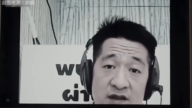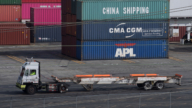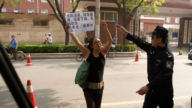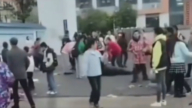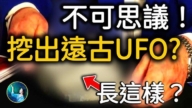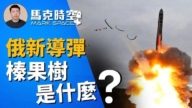【新唐人2014年02月05日讯】中共官方统计数据显示,中国制造业与非制造业商务活动的相关指数全数下滑。经济学家指出,经过三十多年的改革开放,中国已经走出物资匮乏阶段,中国多数产品和制造业已经达到相对饱和,只有转向真正的市场经济,才能找到新的经济增长点。
大陆统计局和“中国物流与采购联合会”,连续发布制造业与非制造业荣枯报告,其中显示,今年1月份,中国制造业采购经理人指数(PMI)为50.5%。相较去年12月的51%,回落了0.5个百分点。而去年11月的PMI指数则为51.4%。
另外,中国非制造业商务活动指数(PMI)为53.4%,比上个月回落1.2个百分点,创下23个月以来新低。
PMI指数高于50,表明制造业活动较为扩张,低于50则为萎缩。
北京“天则经济研究所”所长助理段绍译表示,PMI数据说明﹕中国未来相当长一段时间内经济会不景气,也说明在过去的一年里,中国经济增长已经受到很大影响。
北京“天则经济研究所”所长助理段绍译:主要是中国这些年改革开放以来,原来是一种短缺经济时代,因为严重的短缺,在过去的二十多年里面,可以说多数产品都是稀缺的。只要能做出来就会有人要。而到了今天,这个市场已经不断的走向成熟,它需要真正按照经济规律去办事,找到新的经济增长点,才可能使中国经济持续增长。”
段绍译表示,中国现在需要发现新的市场需求,并且进一步深化改革,才能刺激经济的增长。他举例说,美国企业家乔布斯发明苹果手机,使手机行业历经了一场革命,全球手机行业实现了巨大的经济增长。
段绍译:“而在我们中国,现在如果要进一步实现增长的话,政府第一方面应该要减少对经济的干预,特别是要减少对企业的补贴,政府不要用老百姓纳税人的钱去办企业。还应该给企业家更多的自由,让企业家真正的按照市场经济的规律来配置资源。这样的话才能使经济有更好的增长。”
制造业PMI综合指数主要组成部分,包括新订单、生产、从业人员、供应商配送时间、主要原材料库存等因素。
而“澳新银行”表示,中国1月份制造业PMI回落,主要是受到中国新年的影响。因为制造业早在1月31号大年初一前开始休假,工厂工人都返乡过年去了。
但是段绍译认为,黄历新年放假只是影响生产的一个因素,不应该是制造业PMI回落的主要原因。
段绍译:“其实现在企业都是以盈利为目地的。如果真正是有很大的订单,有很好的需求的话,多数企业他们会加班加点,因为老百姓出来打工就是为了多赚几块钱。能赚钱的事……叫做重赏之下必有勇夫。只要真正能赚钱,企业基本上都不会停工。”
汇丰银行1月30号宣布,中国制造业1月份呈现萎缩,PMI指数为49.5%,是6个月来的首次萎缩。据报导,汇丰的调查以中小企业为主,而中共官方的制造业活动指数,则包含较多大型的国有企业。
英国《路透社》1月31号也报导说,中国PMI的下降,让投资者们找到另外一个理由出售高风险资产。全球投资者已经对资本逃离新兴市场感到紧张。
在过去一周,随着投资者削减对发展中国家的金融赌注,以及预期美国将继续减少货币宽松政策,新兴市场的股票和货币被大量抛售。
中共统计局1月中公布,2013年,中国国内生产总值(GDP)增长7.7%,这显示﹕中国经济仍然处于10多年来增速最缓慢的一段时期。
同时,“澳新银行”的经济学专家在报告中说,“预计中国第一季度经济增长将显示一定程度的放缓”,“中国将下调年经济增长目标到7%”。
采访编辑/秦雪 后制/李勇
China’s Manufacturing Sectors in Decline, Economic Growth Drops
Official China data indicates that manufacturing and
non-manufacturing business activity has declined.
Economists highlight that after 30 years of policies
for reform and opening up, China has now stepped
away from the period of insufficient goods.
Most product and manufacturing
sectors are now relatively saturated.
It is suggested that only by turning into a true
market economy can new growth be found.
China’s National Bureau of Statistics (NBS) and Federation
of Logistics & Purchasing has issued reports about
manufacturing and non-manufacturing sectors status.
The report shows that China’s Purchasing Managers’
Index (PMI) was down to 50.5% in January this year.
This is compared with December 2013
at 51%, and last Novembers PMI at 51.4%
Official figures show a non-manufacturing PMI drop to 53.4%.
This is the lowest since February 2012,
and a drop from 54.6% in December.
A PMI reading above 50% indicates expansion,
while a reading below 50% reflects contraction.
Duan Shaoyi, Assistant Director, Beijing Unirule Institution
of Economics says that this PMI indicates that China’s
economy may now enter a lonfg recession period.
The data also shows that over the past year,
China’s economic growth has been greatly affected.
Duan Shaoyi: “China has opened up reforms.
Economically, the market used to
be insufficient in available goods.
This is because of serious shortages of products over the
past 20 years, and was short of everything at the time.
Whatever goods were produced, someone would buy them.
Now the market has become more mature,
so it needs to follow new economic rules.
It needs to find new economic growth points, and
only with this, can China’s economy continue to rise."
Duan says that China should develop new market needs.
It should continue further reforms, which
can then stimulate economic growth.
Duan uses the example of Steve Jobs,
and Apple’s creation of the iPhone.
The mobile phone industry went through a revolution,
and this sector achieved a huge economic growth.
Duan Shaoyi: “However, in China, in order
to achieve further economic growth, the
government first needs to reduce intervention.
Particularly, it needs to reduce subsidies to enterprises.
The government shouldn’t always use
taxpayer’s money to run businesses.
The government also needs to give
entrepreneurs greater freedoms.
It needs to enable them to follow the rule of a
market economy, to be able to allocate resources.
By doing this, the economy can continue to grow."
The manufacturing PMI also has sub-indices.
These include indices for new orders, production,
employment, vendor deliveries, and raw material stocks.
Australia and New Zealand (ANZ) Bank
says that China’s PMI dropped in January.
This is thought to be mainly because
of the affect by Chinese New Year.
Manufacturing sectors started bank holidays
ahead of January 31, Chinese New Year’s day.
All employees returned to their homes to celebrate.
Duan Shaoyi believes that the Chinese New Year is only
one of the reasons that production has been affected.
It should not be the main reason that
causes manufacturing PMI to drop.
Duan Shaoyi: “Actually enterprises aim to make profit.
If they receive a large order, and high demand
for products, most enterprises will work extra hours.
Employees work for money. If there is a
chance to earn more, people will go for it.
As long as it can make some profits,
factories will not close on bank holidays."
On January 30, HSBC bank announced that
China’s manufacturing sector shrank in January.
The PMI was 49.5%, hitting a six-month low.
Sources say that HSBC’s survey focused
on small and medium sized enterprises.
China’s official PMI includes
larger state-owned enterprises.
On January 31, Reuters reported that
the PMI’s dropping reinforces concerns:
“as global investors already nervous about capital flight in
emerging markets, find another reason to sell riskier assets."
“Emerging market stocks and currencies
were sold off in the past week…
investors cut financial bets in developing nations,
in anticipation that the US will continue to move
to less easy monetary policy." said Reuters.
China’s NBS announced in January
that in 2013, China’s GDP rose 7.7%.
It shows that the economic growth
has been at it’s slowest in 10 years.
ANZ economists indicated in a report that,
“we expect China’s first-quarter economic
growth to show a certain degree of slowdown."
“China should lower its annual economic growth target to 7%."
Interview & Edit/QinXue Post-Production/LiYong


